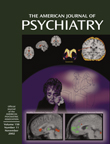Rarely is a publication so well timed and of such high quality as this book. Fewer topics in adult psychiatry are as hot on the horizon and generate as much debate, controversy, and uncertainty as the topic of adult attention deficit disorder (ADD) and attention deficit hyperactivity disorder (ADHD). This collection of invited papers by expert neuroscientists, clinicians, and researchers serves as a compendium of ADD and ADHD literature focused on adults. The text is divided into six sections: background on ADHD as an adult phenomenon; neurobiology of ADHD; assessment and neuropsychology of adult ADHD; differential diagnosis; pharmacological and nonpharmacological treatments; and a concluding section with one chapter that views ADHD in adulthood as the outcome of a developmental process involving deficits in executive functioning.
The background chapter titled “Adults With ADHD: An Overview,” by Paul Wender (a pioneer in adult ADHD research), Lorraine Wolf, and Jeanette Wasserstein, establishes the basic history, phenomenology, comorbidity, and differential diagnosis of adult ADHD. “A Nosology of Disorders of Attention,” by Allan Mirsky and Connie Duncan, provides a neuropsychological layout of attention, including a useful description of the commonly used assessment instruments and measurements and the etiology of attentional problems in disorders other than ADHD.
Jay Giedd and his colleagues at the Child Psychiatry Branch at the National Institute of Mental Health provide one of the most scientifically rigorous chapters, “Brain Imaging of Attention Deficit/Hyperactivity Disorder.” These authors review both anatomical and functional neuroimaging across brain structures in individuals with ADHD. This chapter and David Comings’s chapter, “Clinical and Molecular Genetics of ADHD and Tourette Syndrome: Two Related Polygenic Disorders,” provide compelling evidence for the underlying complex pathophysiology and ultimate biological basis of this highly variable disorder. The neurobiological discussion is widened to include adult developmental trajectories involving aggressive-impulsive antisocial behaviors and associated cognitive profiles. The implication of brain serotonergic systems in cognitive impairments, executive function deficits, diminished moral reasoning, and reduced empathic abilities enhances an understanding of ADHD beyond classical theories of dopaminergic and noradrenergic mechanisms.
The sections on assessment and differential diagnosis of adult ADHD provide current, state-of-the-art scientific information for clinicians and researchers evaluating adults. These sections are among the most clinically useful in the text because they provide an extensive overview of the development of instruments used to evaluate ADHD, such as the Continuous Performance Test and paper-and-pencil rating scales such as the Wender-Utah and Connors Hyperactivity Index. They also critique the utility of these instruments for different clinical situations and comorbid disorders and describe how they can be packaged for a comprehensive ADHD evaluation.
The section on treatment of adult ADHD is thin, somewhat perfunctory, and lacking the richness of other sections of the text. The chapter on basic pharmacological treatment of adult ADHD would have benefited from a more thorough discussion in lieu of time spent on more fringe treatment modalities such as EEG biofeedback. This reflects the emergent state of the treatment literature in adult ADHD.
This text is a must for both child and adult clinicians and researchers who are working with patients with ADHD and who are seeking a deeper understanding of its clinical, neuropsychological, and biological complexities as well as its developmental course from early life into adulthood. In particular, it is an excellent sourcebook for adult clinicians who may be uncomfortable with the notion of adult ADHD and who wish to improve their proficiency in the assessment and management of adults whose clinical presentations involve problems in attention/organization, impulsivity, and executive functioning.

